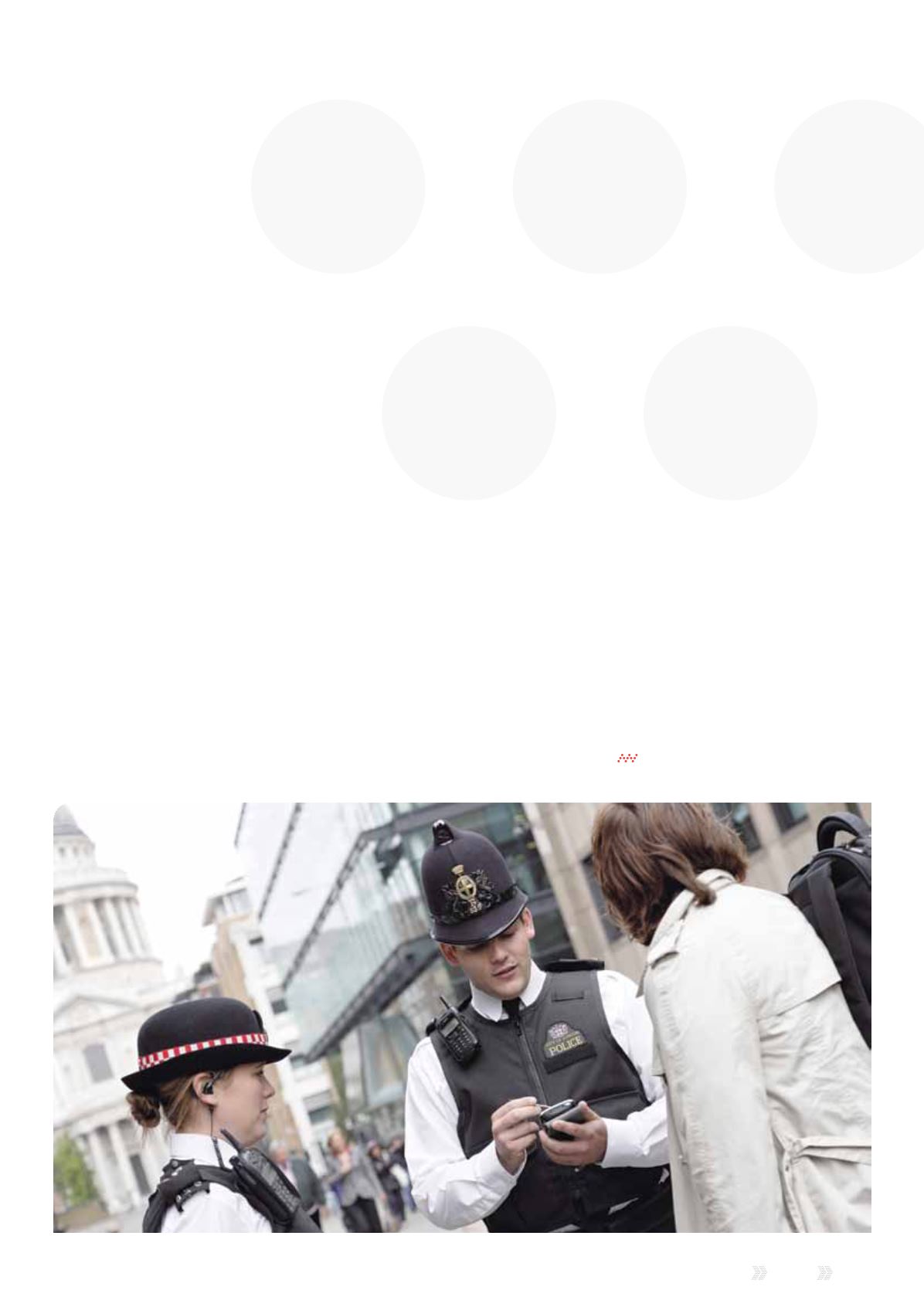
Reach
Issue 8 2015
|
19
of getting that information to the
necessary agency entails the manual
entry of information into a paper form
that takes several days to arrive at the
intended destination.
With Pronto, information captured
digitally can be shared in real time
to provide a common operational
picture across all agencies, subject to
agreed information sharing protocols.
This means that all agencies can
have relevant information to support
accurate and timely decision making.
Operational benefits,
cashable savings
It is expected that Great Britain’s
police forces will have had their
budgets cut overall by 50 per cent
by the next government. As a
consequence, forces are spending
money to boost their efficiencies,
maintain a high level of visibility within
their communities, as well as deliver
against the Digital First agenda.
A quarter of all police forces in
Great Britain now use Pronto to
support them in these objectives.
And the gains are significant. For
example, the time savings in the
back office are as much as ten
minutes per item, with an additional
saving of between 25 and 30
minutes when a crime is recorded
digitally. In addition, there is a
reduction in the number of requests
handled by the control room as
officers no longer need to call in for
details as the information is available
on the device. This means that
critical activity can be prioritised and
responded to more efficiently, and
officers save on average two hours
per shift which was previously spent
on station-based administration.
Surrey Police was the first force
in England within the national
Electronic Witness and Digital
Signature Pilot Project to present
notes and a diagram drawn on an
eNotebook’s screen as evidence
in court. With witness’ signatures
digitally captured, the vast sums of
money invested in re-visiting victims
and witnesses to take statements
can be reduced dramatically.
Exploring the potential
While using the electronic notebook,
forces have also been able to
transform a range of other activities
by using features, such as the
camera and Bluetooth. The camera
can capture and embed photos into
business processes. For example,
embedding photos within a Domestic
Abuse, Stalking and Harassment
(DASH) application is proven to
deliver swifter justice and better
outcomes for victims. Another
example is the issuing of an on-the-
spot ticket: by using Bluetooth the
ticket can be printed and given to the
recipient immediately. Compare this
with the previous process of waiting
up to seven days to receive a ticket
via the post and the benefits are
immediately visible.
From a storage perspective, current
mandates mean the seven-year
retention of forms and notebooks in
a warehouse, as well as additional
costs in terms of securely printing
forms and disposing of older ones,
can immediately become more cost
efficient. Pronto provides the option
for digital documents to be stored in
a secure server room.
An increasing number of police forces
are embracing mobile data technology.
The results have shown a dramatic
reduction in time spent on processes
and duplication of information, and the
removal of mistakes.
Police forces continue to find new
uses for mobile technology to further
improve the efficiency of operations.
Similarly, technology evolves rapidly,
for example, video (body worn, fixed
and mobile) and geo-fencing mapping
capabilities to enhance effective use of
resources and proactively provide front
line staff with the right information
at the point of need. Forces should
continue to explore further benefits
and ways to develop applications to
enable the full end-to-end digitisation
of the CJS.


